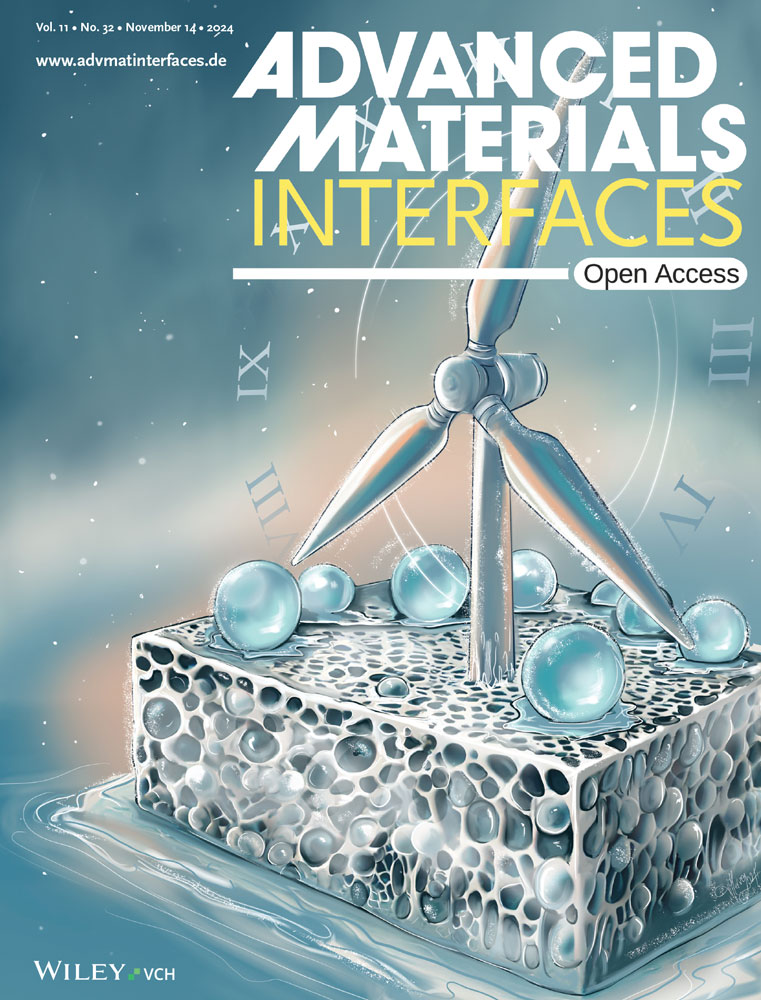Dragonfly-Inspired Compound Eye Lens with Biomimetic Structural Design (Adv. Mater. Interfaces 3/2025)
IF 4.4
3区 材料科学
Q2 CHEMISTRY, MULTIDISCIPLINARY
引用次数: 0
Abstract
Compound Eye Lens
Dragonflies use their 360-degree wide-angle view to catch small prey and escape from natural enemies approaching from behind. This functionality is made possible by a three-dimensional compound eye, which consists of more than 30000 individual eyes. In article 2400480, Kenshin Takemura and co-workers develop a mold that could perfectly reproduce the compound eyes of dragonflies using a wide variety of materials.

仿生结构设计的蜻蜓仿生复合眼透镜(Adv. Mater)。接口3/2025)
复眼透镜蜻蜓利用它们360度的广角视野捕捉小型猎物,并从后面接近的天敌中逃脱。这种功能是由一个三维复眼实现的,它由超过30000个独立的眼睛组成。在文章2400480中,Kenshin Takemura和他的同事开发了一种模具,可以使用各种各样的材料完美地复制蜻蜓的复眼。
本文章由计算机程序翻译,如有差异,请以英文原文为准。
求助全文
约1分钟内获得全文
求助全文
来源期刊

Advanced Materials Interfaces
CHEMISTRY, MULTIDISCIPLINARY-MATERIALS SCIENCE, MULTIDISCIPLINARY
CiteScore
8.40
自引率
5.60%
发文量
1174
审稿时长
1.3 months
期刊介绍:
Advanced Materials Interfaces publishes top-level research on interface technologies and effects. Considering any interface formed between solids, liquids, and gases, the journal ensures an interdisciplinary blend of physics, chemistry, materials science, and life sciences. Advanced Materials Interfaces was launched in 2014 and received an Impact Factor of 4.834 in 2018.
The scope of Advanced Materials Interfaces is dedicated to interfaces and surfaces that play an essential role in virtually all materials and devices. Physics, chemistry, materials science and life sciences blend to encourage new, cross-pollinating ideas, which will drive forward our understanding of the processes at the interface.
Advanced Materials Interfaces covers all topics in interface-related research:
Oil / water separation,
Applications of nanostructured materials,
2D materials and heterostructures,
Surfaces and interfaces in organic electronic devices,
Catalysis and membranes,
Self-assembly and nanopatterned surfaces,
Composite and coating materials,
Biointerfaces for technical and medical applications.
Advanced Materials Interfaces provides a forum for topics on surface and interface science with a wide choice of formats: Reviews, Full Papers, and Communications, as well as Progress Reports and Research News.
 求助内容:
求助内容: 应助结果提醒方式:
应助结果提醒方式:


